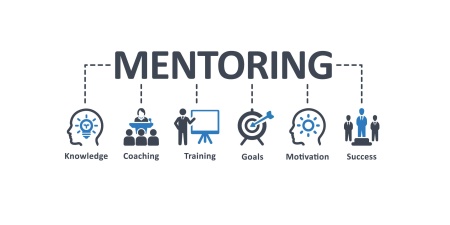By Ken Thompson & J. R. (Buzz) Campbell
The customer has a NEED, the salesperson desires the ORDER, and the marketing department provides the salesperson with the TOOLS to promote the product and services and survey the results. Rather simple and routine until the world of Digitization raised its head.In today’s scenario, the customer’s Purchasing Agent likely won’t see the salesperson, and, if he or she could get an appointment, and showed up with a paper product promotional piece, a specification sheet, or a ‘show & tell’ item, he/she would probably be dismissed as a “dinosaur.”
While there is no single way to approach the Sales & Marketing proposition in our industry space today, there sure is a significant tilt toward digitized syndicated content, fully automated transactional processes, and a variety of efficient logistic solutions. The uniqueness of our industry’s ‘package’ of gases and hard goods requires some different approaches to sales and marketing strategies. We will begin with hard goods. Comparisons with other distribution product verticals are more easily understood when gas products are removed from our mix. It also is in these other channels where we find our least understood, sometimes vague, and less obvious competitors – the newly digitized MROs, (e.g., Grainger, MSC, Amazon Business), Safety, and Electronic Marketplaces.
Hard goods products are owned by the manufacturer; so that is where the content must also reside. It is, therefore, the responsibility of the manufacturer to see that the product content represents them in the best possible manner. Images must be crisp, configurable if appropriate, and ‘features, functions & benefits’ clearly stated.
At the same time, content must be appropriate to a particular customer segment and manipulated by talented digital process professionals to accommodate a particularly important and focused emphasis. These images must be customer focused, as well as available for inclusion in a distribution partner’s representation of his supplier’s product. Quality in processes for displaying content vary considerably. Due diligence prior to making a choice for PIM (Product Information Management) would be critical as it represents a strategic decision for long term.
The transactional processes between trading partners are carried out through collaborating ERP platforms. Where software platforms are identical, or nearly identical, exchange of data is relatively simple. Otherwise, APIs will have to be initiated and coordinated between respective systems. The level of data to be exchanged will be decided upon between trading partners. Today’s website buyers expect to see up-to-the-minute inventory and their customer specific pricing as they browse for products. They also expect to login and see order status, view order and invoice history, and potentially pay down invoices directly from the website. As comfort between trading partners grows, VMI, AI predictive analytics, and finally Procurement Punch Out systems can be added to where ERP software is literally talking directly between trading partners.
The logistics solutions come in many choices with endless options. All need to match up with the customer’s needs. A user deploying Kanban manufacturing strategies has logistics needs that differ from a user with established min/max stocking levels. Logistics managers must have their finger on the pulse constantly. Supply chain interruptions of all descriptions must be anticipated and then managed. Any choke point anywhere in the chain will be felt throughout the entire chain.
As suggested earlier, hard goods with specific SKU identifiers, are ‘figuratively’ all shipped in brown boxes from the manufacturer’s or distributor’s dock with distribution to the customer performed by a separate common or contract carrier. That separation of manufacturing from delivery is quite different from the integration of distribution with production and operations in the industrial gas business.
Industrial, medical and specialty gases are shipped to the customer by the producer/distributor as cryogenic liquids or high-pressure gases in very specialized containers by specialized transports, both of which are owned and operated by the supplier. The ownership-operation of the containers and vehicles have significant capital, labor and support costs, which vary significantly depending on the product and the mode of containment and transport. That mode of containment and transport is determined by the product and the volume per time period (usually by month), the optimum volume per delivery, the roundtrip distance for a delivery, and other required services. The total cost of this service system, including the product cost itself and some profit, varies greatly between customers and is therefore difficult to standardize. However, most astute suppliers have a customer P&L system which provides an efficient tool for determining what all these costs are and thereby by what the price should be.
The result of this is that pricing of gases is quite different from the pricing of hard goods. Another result is that the marketing and selling of gases requires a different kind of ‘consultative and engineered systems approach.’ In that selling process, the salesperson needs to listen carefully to the customer and what he needs. Another requirement is for the selling process to creatively develop the best product and application solution together with an attractive economic package. That degree of creative systems selling usually requires significant training and experience. Duplicating that application of systems and selling experience and competence with an effective digitized web-based marketing and selling program from the internet will be a challenge to achieve.
We firmly believe that accelerating improved operating efficiencies and cost reductions in gas operations which improve serving customer needs can be communicated via digitized web-based marketing. An example of this is the extension of the hard goods VMI concept to the control and management of the W & C distributor’s cylinder ‘pool’ inventory. This practice is well established and already an important part of the distributor’s ERP platform and management processes. It has certainly improved the distributor’s asset security, cash flow and gases profitability. It has not yet been a practice and customer advantage that has been weaved into a digital web-based marketing program. That idea has, in turn, led to better bulk gas inventory control at the bulk tank. While that process has yet to be widely integrated in distributor ERP systems it is leading to programs to improve dispatch and routing of bulk gases transport to further reduce those costs and increase customer service levels. These innovations are also stimulating similar systems to better manage the utilization, control and management of liquid and gas cylinders.
This systems improvement approach in gas operations, when communicated to a large number of customers digitally, can be the backbone of more creative marketing of higher gas supply service levels achieved from improvements in operating practices. And this can be accomplished while reaching a large audience as is now happening with hardgoods. Collaboration among those in our industry with experience in the total scope of gases management, software design, and ERP facilitators, along with their partners are building beta sites as this publication goes to press. We suggest that GAWDA can play a significant role in furthering these developing digital solutions by using its resources to inform its membership through both its written and visual presentations.









